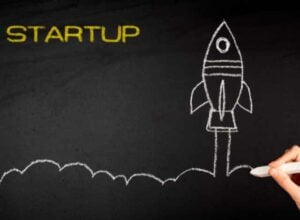To enhance grant proposal success, it is crucial for companies and businesses to first gain a comprehensive understanding of their current operations. This involves a thorough analysis of existing processes, resources, and outcomes. By mapping out the operational landscape, organizations can identify strengths and weaknesses that will inform their grant proposals.
For instance, a nonprofit focused on community development might assess its outreach programs, funding sources, and volunteer engagement levels. This foundational knowledge not only helps in crafting a compelling narrative but also ensures that the proposal aligns with the organization’s mission and capabilities. Moreover, understanding current operations allows businesses to articulate their unique value proposition effectively.
When organizations can clearly define what they do, who they serve, and how they make an impact, they create a strong case for funding. For example, a healthcare organization might highlight its innovative patient care model and the measurable outcomes it has achieved. This clarity not only resonates with potential funders but also sets the stage for identifying specific areas where grant funding can drive further improvements or expansions.
Identifying Areas for Improvement
Once a clear picture of current operations is established, the next step is to identify areas for improvement. This process involves critical self-reflection and data analysis to pinpoint gaps in services, inefficiencies in processes, or unmet community needs. For instance, a small business may discover through customer feedback that its product delivery times are longer than industry standards.
Recognizing this issue not only provides a basis for seeking grant funding but also demonstrates a commitment to continuous improvement. In addition to internal assessments, organizations should engage with stakeholders—such as employees, customers, and community members—to gather insights on potential areas for enhancement. This collaborative approach can uncover valuable perspectives that may not be immediately apparent.
For example, a local arts organization might learn from community surveys that there is a demand for more accessible programming for individuals with disabilities. By addressing these identified areas for improvement in their grant proposals, organizations can present a compelling case for funding that aligns with both their mission and community needs.
Setting Clear and Achievable Goals
With areas for improvement identified, organizations must set clear and achievable goals that will guide their grant proposal efforts. These goals should be specific, measurable, attainable, relevant, and time-bound (SMART). For instance, instead of stating a vague goal like “improve community engagement,” an organization could set a goal to “increase participation in community workshops by 30% over the next year.” This level of specificity not only clarifies the intended outcomes but also provides a benchmark against which success can be measured.
Additionally, aligning goals with the funder’s priorities is essential. Many grant-making organizations have specific missions or focus areas; therefore, tailoring goals to resonate with these priorities can significantly enhance the likelihood of funding approval. For example, if a foundation prioritizes environmental sustainability, a proposal that includes a goal to reduce waste in operations by 25% would be more appealing than one that does not address this concern.
By setting well-defined goals that align with both organizational aspirations and funder interests, businesses can create a roadmap for success in their grant proposals.
Researching Best Practices and Solutions
To bolster the effectiveness of grant proposals, organizations should invest time in researching best practices and solutions relevant to their goals. This research can provide insights into successful strategies employed by similar organizations or industries. For instance, a nonprofit seeking to enhance its educational programs might look into evidence-based teaching methods or innovative curriculum designs that have proven effective elsewhere.
By incorporating these best practices into their proposals, organizations can demonstrate a commitment to excellence and increase their credibility in the eyes of funders. Furthermore, understanding the landscape of available solutions allows organizations to present well-informed arguments for why specific interventions are necessary. For example, if a company aims to improve employee training programs through grant funding, it could reference studies showing the positive impact of professional development on employee retention and productivity.
By grounding proposals in research and proven methodologies, organizations not only strengthen their case but also position themselves as knowledgeable leaders in their field.
Creating a Detailed Plan of Action
A detailed plan of action is essential for translating goals into tangible outcomes within grant proposals. This plan should outline the specific steps the organization will take to achieve its objectives, including timelines, responsible parties, and required resources. For instance, if an organization aims to launch a new community health initiative funded by a grant, its plan might include phases such as community assessment, program design, implementation timelines, and evaluation metrics.
Moreover, including contingency plans within the action plan can further enhance proposal strength. Funders appreciate organizations that anticipate challenges and have strategies in place to address them. For example, if an organization is launching a new program that relies on volunteer support, it could outline how it will recruit additional volunteers if initial efforts fall short.
By presenting a comprehensive plan of action that addresses both opportunities and potential obstacles, organizations can instill confidence in funders regarding their ability to execute the proposed project successfully.
Presenting the Proposal Effectively
The final step in enhancing grant proposal success is presenting the proposal effectively. This involves not only crafting a well-written document but also ensuring that it is visually appealing and easy to navigate. Clear headings, bullet points, and concise language can help make complex information more digestible for reviewers.
Additionally, incorporating visuals such as charts or graphs can illustrate key data points and enhance understanding. Furthermore, storytelling plays a vital role in proposal presentation. Funders are often moved by compelling narratives that highlight the human impact of proposed projects.
For instance, including testimonials from beneficiaries or case studies demonstrating past successes can create an emotional connection with reviewers. By weaving together data-driven insights with personal stories, organizations can create a powerful narrative that resonates with funders on multiple levels. In conclusion, enhancing grant proposal success requires a multifaceted approach that begins with understanding current operations and identifying areas for improvement.
By setting clear goals aligned with funder priorities and researching best practices, organizations can create compelling proposals backed by solid plans of action. Finally, effective presentation techniques—combining clarity with storytelling—can elevate proposals from mere documents to persuasive narratives that inspire action. With these strategies in place, companies and businesses can significantly increase their chances of securing grant funding and driving meaningful change within their communities.























